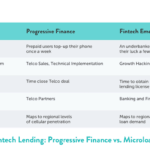Navigating Change: A Step-By-Step Approach to Revising a Social Enterprise Business Plan
Editor’s note: This post is part of the NextBillion series, “Course Correction,” one of several topics we’re covering through special series this year. Click here for more details on our 2018 series.
You can learn more about the business plan approach described in this post in Eric Carlson and James Koch’s new book, Building A Successful Social Venture. Subscribe to our e-newsletter, NextBillion Notes, in October to read a free chapter of the book.
When EarthSpark International’s president, Allison Archambault, came to the 2012 Global Social Benefit Institute (GSBI) accelerator at Santa Clara University’s Miller Center for Social Entrepreneurship, EarthSpark had already turned on Haiti’s first micro-grid. At the accelerator, she developed a business plan for distributing solar home systems (SHS) in Haiti, which included the potential expansion of more micro-grid solutions. Over the next five years EarthSpark set up a Haitian company which sold around 18,000 clean energy products, including SHS. It also expanded its first micro-grid and built a second, and invented the SparkMeter, which sold 40,000 units in 22 countries, making it the leading meter for micro-grids – a product that was eventually spun off as a separate venture. The company seemed to be primed for a successful future.
But EarthSpark’s 2012 business plan faced three significant problems:
- The unit economics of SHS in Haiti did not lead to profitability (largely due to sales and distribution costs);
- The rate of SHS installations would need to be increased by about 100 times per year in order to solve the energy problem in Haiti in 10 years (again a substantial cost problem); and
- SHS could not efficiently support medium or large customers, such as retail stores or light industrial sites, which limited the impact of SHS on the Haitian economy.
During the years following GSBI 2012, it became increasing apparent that, because of these problems with SHS, micro-grids were the solution that EarthSpark should pursue. So Archambault reapplied to the 2018 GSBI accelerator program and was accepted: Her goal was to develop a revised business plan to secure financing to rapidly expand micro-grids in Haiti.
I was selected as a mentor for EarthSpark in 2018, along with veteran GSBI mentor Bob MacDonald, who had been an EarthSpark mentor in 2012. Below, I describe the results of the company’s 2018 business plan revision, using the paradigm from Building A Successful Social Venture, a new book in which Jim Koch and I explore how to create, analyze and revise business plans for social ventures or enterprises.
Mission, Opportunity and Strategies
There are three elements in our paradigm that, taken together, can be used to assess a social venture’s vision and theory of change. The first element consists of three parts — mission, opportunity and strategy — which together define the theory of change. External environment analysis is the second element, and target market is the third.
EarthSpark’s mission (“Eradicate energy poverty in Haiti”) and opportunity (70 percent of Haiti’s 10 million people are “off the grid” and use kerosene, candles and wood instead of clean energy) did not need to be changed. But to achieve its mission, the company needed to change its key strategy, focusing on building 40+ micro-grids. To do this, two other supporting strategies were necessary: 1) to obtain support from 40+ communities, and 2) to facilitate the development and use of a micro-grid licensing program by the government of Haiti. Further, EarthSpark needed to be able to rapidly construct and efficiently service its micro-grids.
External Environment Analysis
While the external environment in Haiti did not change, the key element of interest changed from households to villages. EarthSpark undertook a detailed national survey to determine which villages were good candidates for micro-grids and what capacities they would need. Another unexpected environmental factor was a significant natural disaster (a hurricane), which debilitated EarthSpark’s first micro-grid, requiring time and money to rebuild it.
Target Market
The key market segmentation now became villages (for micro-grids) rather than households for SHS. EarthSpark decided on a phased approach, and set a goal of 24 micro-grids in five phases over three years. It identified 32 target villages (in the south of Haiti) and secured letters of interest from mayors in 15 of these cities, with a process to acquire more letters. EarthSpark also identified a number of other potential suppliers of micro-grids in Haiti which, if the company were successful, would likely be able to reach villages that were beyond its capacity.
Operations
EarthSpark’s key operations and value chain now included:
- Identifying and sizing villages for micro-grids
- Obtaining letters of support from village mayors
- Securing financing for micro-grid capital expenses (grants and loans)
- Getting regulatory approval to build micro-grids
- Building micro-grids
- Operating micro-grids (profitability)
- Selling electrical appliances and machinery in micro-grid markets, and selling SHS where micro-grids could not reach
EarthSpark had demonstrated the ability to execute on all these strategies, except #4 (getting regulatory approval), since this approval was ad hoc: The government required approval, but it didn’t have a process for obtaining it. Therefore, setting up an approval process became the key strategy to pursue, in order to enable rapid expansion of micro-grids in Haiti.
Organization and Human Resources
These new strategies would require both the organization and its human resources to be expanded. A micro-grid financing and ownership (asset management) organization would need to be spun out of EarthSpark to fund, build and oversee operations of micro-grids. Additional local expertise would need to be hired or developed to build and operate the micro-grids. But most importantly, staff would be needed to meet with government officials to help them develop a regulatory process in Haiti – and to ensure that this process would efficiently and fairly grant approval for micro-grids.
Business Model
EarthSpark’s business model would also need to change dramatically. Due to significant capital expenses (on the average about $500,000 per system), the operational profitability of each micro-grid would take a few years. The overall payback of the capital would require at least a 12+ year horizon. So capital expenses would probably have to be based on grants or long-term debt. But equity financing might also be possible from funders such as individuals, governments or foundations with long-term interest in clean energy.
An analysis of unit economics indicated that pricing would need to offer customers a 50-80 percent savings compared to fossil fuels. At that price level, grid operators could operate on a break-even basis, villages could break even on municipal services (such as street lighting), lenders could receive a 7 percent return on debt, and investors could expect a 2 percent annual internal rate of return.
Financing
This model would require a phased (milestone-based) financing process, beginning with two (already complete) micro-grids, then two more ($625,000), then four more ($2.5 million), then 16 more ($9 million) –for a total of 24 micro-grids of different sizes/costs, being built with a total financing of $12 million, ($3.6 million in grants, then $5.4 million in debt, and $3 million in equity). As of this date, a $125,000 commitment for the initial $625,000 financing has been received (but it is contingent on the remainder being raised). So there is a lot of work to be done to secure the financing.
Metrics
While the company’s main metric (number of clean energy customers) was unchanged, the financing, organizational resources and process metrics would all be different for micro-grids vs. SHS. For example, the key process metric would become the length of time between community approval of the micro-grid (via a mayor’s letter of interest) and going live.
Operating Plan
The operating plan also changed significantly—with the high priority item being getting a regulatory approval process implemented, followed by financing and building micro-grids.
Summary
The paradigm from Building a Successful Social Venture proved useful in revising EarthSpark’s business plan. The revision, which involved a change in strategy, required changes in all other elements of the plan. EarthSpark now has a rational business plan for financing and building micro-grids in Haiti, which will make a major impact on Haiti’s energy poverty problem.
Eric Carlson is a retired Silicon Valley entrepreneur now focusing on accelerating global social ventures.
Photo credit: Pexels.com
- Categories
- Energy, Social Enterprise



